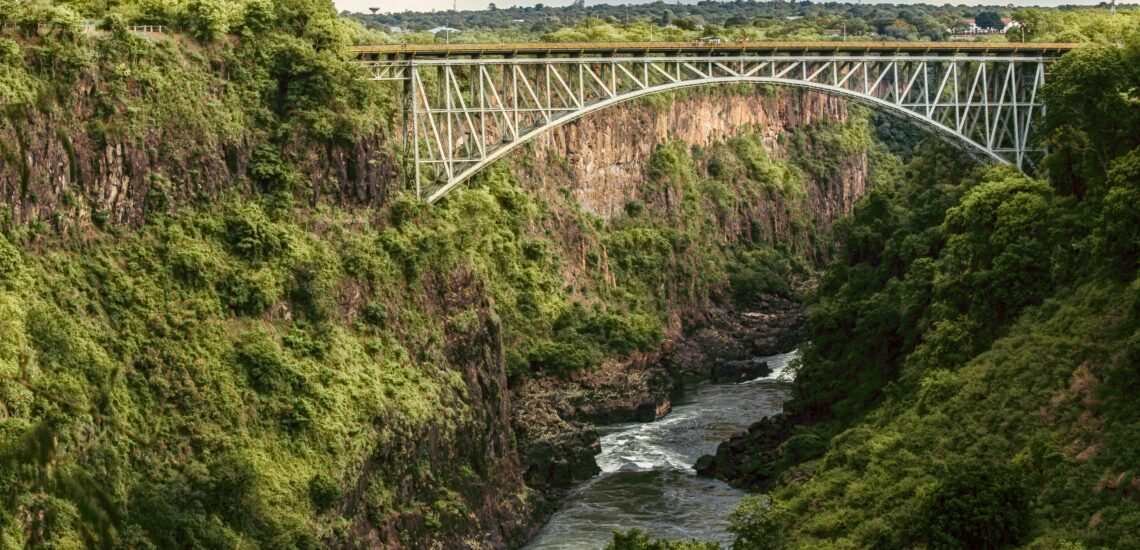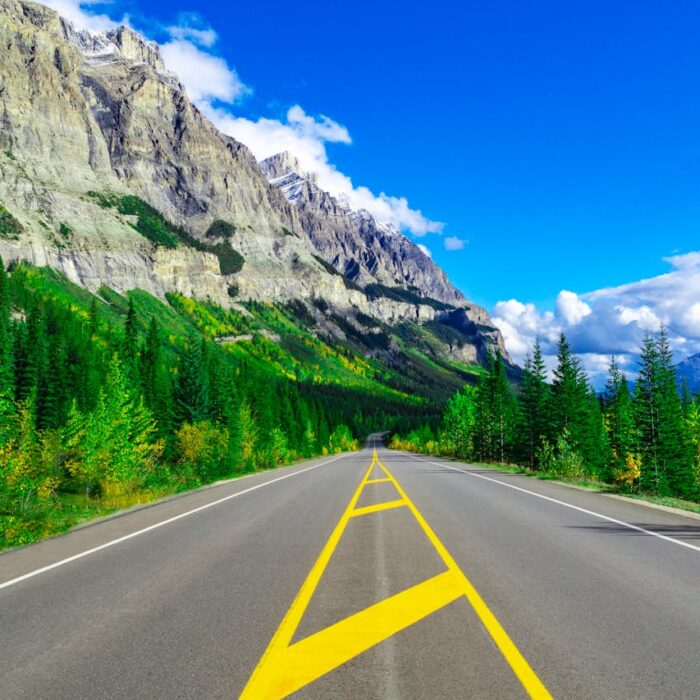Quick facts about Zimbabwe:
- Population: Approximately 16 million people.
- Capital: Harare.
- Official Languages: English, Shona, and Sindebele (Ndebele).
- Currency: Zimbabwean Dollar (ZWL), with past use of multiple currencies due to hyperinflation.
- Government: Unitary presidential republic.
- Major Religion: Christianity (predominantly Protestant), with indigenous beliefs and a smaller Muslim minority.
- Geography: Located in southern Africa, landlocked and bordered by Zambia to the north, Mozambique to the east, South Africa to the south, and Botswana to the west. It features diverse landscapes, including savannas, plateaus, and the Zambezi River.
Fact 1: Zimbabwe was formerly known as Rhodesia
The name “Rhodesia” was used from 1895 to 1980 and was derived from Cecil Rhodes, a British businessman and colonialist who played a key role in the establishment of British control over the region.
Historical Context: The area now known as Zimbabwe was colonized by the British South Africa Company (BSAC) in the late 19th century, leading to the establishment of Southern Rhodesia. The territory was named after Cecil Rhodes, who was instrumental in the company’s expansion into the region.
Transition to Zimbabwe: In 1965, the white-minority government of Southern Rhodesia unilaterally declared independence from Britain, renaming the country Rhodesia. This declaration was not recognized by the international community, leading to sanctions and isolation. The country underwent a prolonged period of conflict and negotiations over its future.
In 1980, following a series of agreements and negotiations, Rhodesia was officially recognized as an independent state and was renamed Zimbabwe.

Fact 2: Zimbabwe has 2 main peoples
Zimbabwe is home to two main ethnic groups, the Shona and the Ndebele, but the country is linguistically diverse, with around two dozen languages spoken. The Shona people are the largest ethnic group, comprising the majority of the population, while the Ndebele people are the second largest group. The country officially recognizes 16 languages, including Shona and Ndebele. Other languages spoken include Chewa, Chibarwe, Chitonga, Chiwoyo, Kalanga, Koisan, Ndau, Shangani, Sotho, Shubi, and Venda. This linguistic diversity reflects the country’s complex cultural heritage and the presence of various ethnic communities across the nation.
Fact 3: Victoria Falls can be visited in Zimbabwe
Located on the border between Zimbabwe and Zambia, the falls are one of the most iconic natural attractions in the world. The Zimbabwean side offers some of the best viewing points and visitor facilities, with the town of Victoria Falls serving as the main gateway to the site.
The falls, known for their impressive width and height, create a stunning spectacle as the Zambezi River plunges over the edge. Visitors to the Zimbabwean side can enjoy a range of activities that allow them to experience the falls from various angles, including scenic views from the well-maintained paths and vantage points. The area is well-equipped with accommodations and tour services, making it a popular destination for those wanting to witness the grandeur of Victoria Falls.
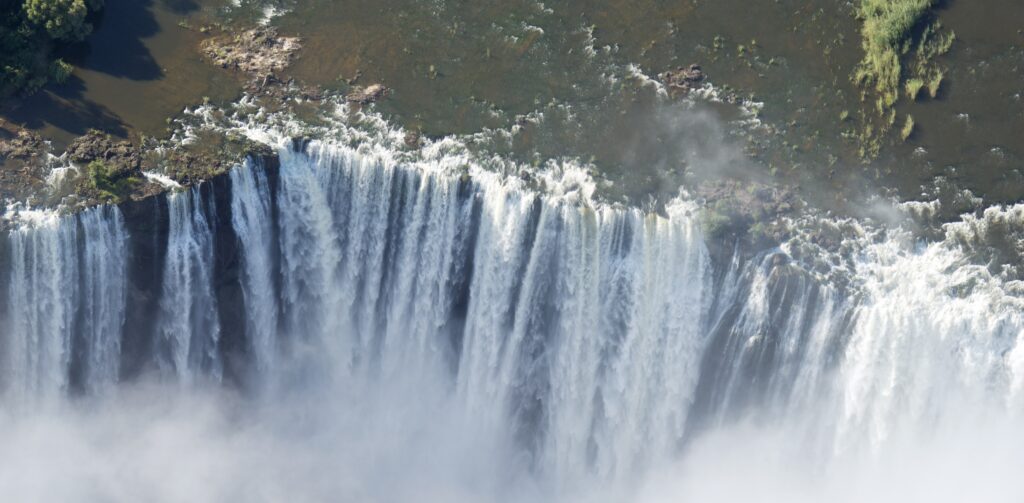
Fact 4: Lake Karibo is one of the world’s largest man-made lakes
Lake Kariba, created by the construction of the Kariba Dam on the Zambezi River, is one of the world’s largest man-made lakes. Located on the border between Zimbabwe and Zambia, the lake covers approximately 5,400 square kilometers and has a maximum depth of about 28 meters. The dam, completed in 1959, was primarily built to generate hydroelectric power, providing electricity to both countries.
Beyond its role in power generation, Lake Kariba has become a significant resource for fisheries and tourism. The lake supports a diverse array of fish species and attracts visitors for boat safaris and fishing.
Fact 5: Zimbabwe has 5 UNESCO World Heritage Sites
Zimbabwe is home to five UNESCO World Heritage Sites, each recognized for its unique cultural and natural significance. These sites reflect the country’s rich history, diverse ecosystems, and cultural heritage.
1. Great Zimbabwe National Monument: This site encompasses the remains of the ancient Great Zimbabwe city, a powerful kingdom that thrived from the 11th to 15th centuries. The ruins include impressive stone structures, such as the Great Enclosure and the Great Tower, which showcase the architectural and engineering skills of the Shona civilization.
2. Mana Pools National Park: Located along the Zambezi River, this park is renowned for its diverse wildlife and pristine landscapes. It is part of the larger Zambezi River Basin ecosystem, supporting large populations of elephants, buffalo, and various bird species. The park is valued for its natural beauty and ecological significance.
3. Hwange National Park: Zimbabwe’s largest game reserve, Hwange National Park is known for its large herds of elephants and a wide range of other wildlife, including lions, giraffes, and numerous bird species. The park’s diverse habitats, from savannas to woodlands, make it a critical conservation area.
4. Matobo Hills: This site features unique granite formations and ancient rock art created by early inhabitants of the region. The hills are also the final resting place of Cecil Rhodes, a prominent figure in Zimbabwe’s colonial history. The area’s cultural and geological features are of great significance.
5. Khami Ruins: The Khami Ruins are the remnants of an ancient city that was a major center of trade and politics in the pre-colonial period. The site includes the remains of stone structures, including walls and terraced areas, which reflect the advanced urban planning and craftsmanship of the Khami civilization.
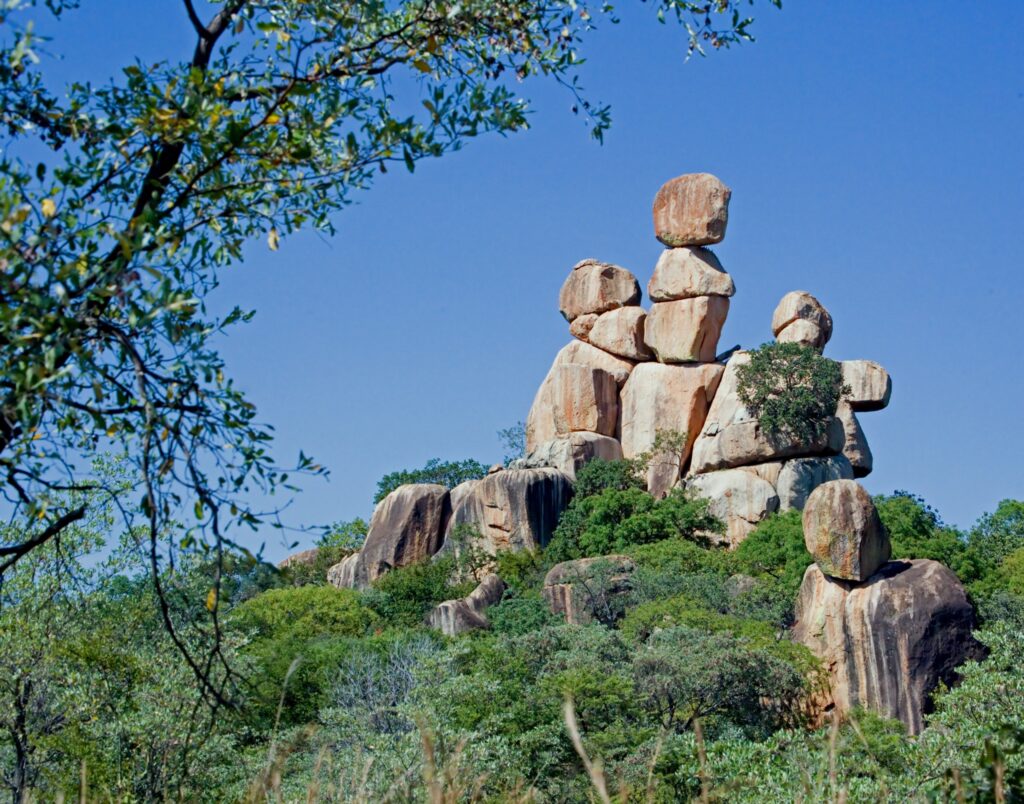
Fact 6: Zimbabwe has a huge number of cave paintings
Zimbabwe is renowned for its vast collection of cave paintings, which are among the most significant and numerous in Africa. These ancient artworks, scattered across various sites in the country, offer profound insights into the prehistoric cultures of the region.
The paintings are primarily found in areas such as the Matobo Hills and the Chimanimani Mountains. Created several thousand years ago, they feature a diverse array of subjects, including wildlife, human figures, and ceremonial scenes. These vibrant and detailed depictions provide valuable information about the social and spiritual life of the early inhabitants, believed to be the San people.
Fact 7: Zimbabwe comes from the words “houses of stone”
The name “Zimbabwe” is derived from the ancient city of Great Zimbabwe, which is a significant historical site in the country. The term “Zimbabwe” itself is believed to come from the Shona language, with “dzimba dze mhepo” translating to “houses of stone.”
Great Zimbabwe, once a thriving city between the 11th and 15th centuries, was renowned for its impressive stone structures, including the Great Enclosure and the Great Tower. These structures are a testament to the advanced engineering and architectural skills of the Shona people.
Note: If you are planning to travel independently in the country, check before traveling whether you need an International Driving Permit in Zimbabwe to rent and drive a car.
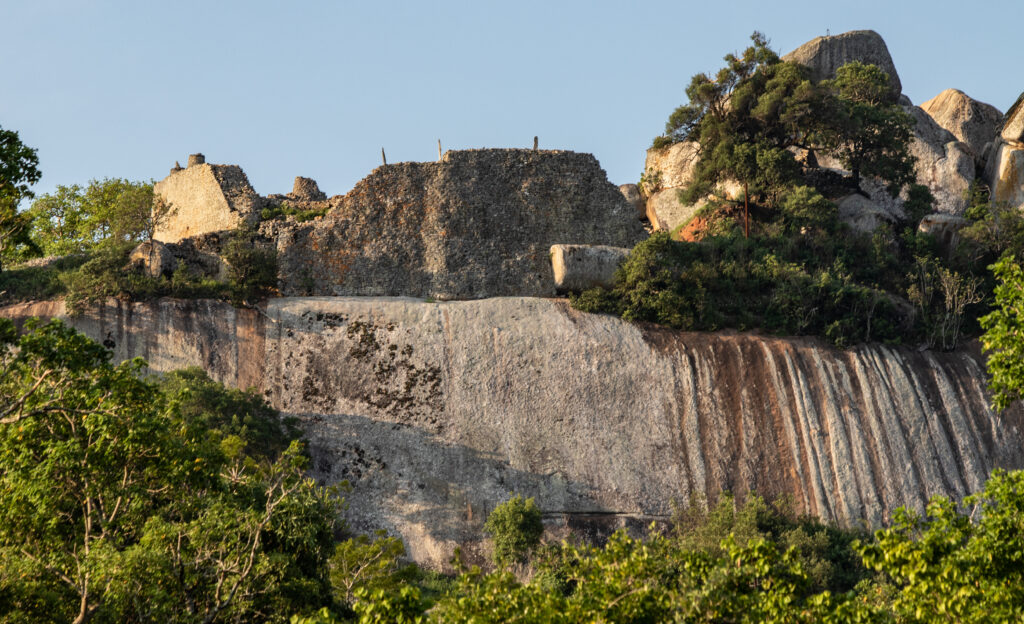
Fact 8: Zimbabwe’s record-breaking inflation rate
At the height of Zimbabwe’s hyperinflation crisis in the late 2000s, the country’s economic situation became so dire that people needed millions of Zimbabwean dollars to buy basic food items. By November 2008, Zimbabwe’s inflation rate had reached an astronomical 79.6 billion percent annually. Prices for everyday goods were skyrocketing at an unprecedented rate, making it necessary for individuals to carry huge amounts of cash just to purchase essential items.
For example, the price of a loaf of bread, which cost around 10 Zimbabwean dollars in early 2008, soared to over 10 billion Zimbabwean dollars by the end of the year. This rapid devaluation of the currency rendered it virtually worthless and severely impacted the daily lives of Zimbabweans. In response to this crisis, Zimbabwe eventually abandoned its currency in 2009, moving to foreign currencies like the US dollar and South African rand to stabilize the economy.
Fact 9: Both white and black rhinos can be seen in Zimbabwe
In Zimbabwe, both white and black rhinos can be seen, making the country a significant destination for rhino conservation and wildlife viewing. The southern white rhino population has grown substantially due to effective conservation efforts and can be found in various national parks and reserves. Historically, Zimbabwe also had a small population of the critically endangered northern white rhino.
Black rhinos, known for their more solitary behavior, are present in Zimbabwe as well. They are primarily found in protected areas like Hwange National Park and Matobo Hills.

Fact 10: Magical thinking is still prevalent in the traditions of the peoples in Zimbabwe
Many communities, particularly in rural areas, continue to hold beliefs in ancestral spirits, witchcraft, and supernatural forces. These beliefs often influence daily life, social interactions, and responses to illness or misfortune.
For instance, when people face unexplained events, such as sudden illness or unexpected deaths, it is not uncommon for them to seek guidance from traditional healers or spiritual leaders. These figures, often seen as intermediaries between the physical and spiritual worlds, play a crucial role in interpreting the causes of misfortune, which are sometimes attributed to witchcraft or displeased ancestors. Despite the modernizing influences in urban areas, these traditional beliefs in magical thinking still resonate with many Zimbabweans.

Published September 15, 2024 • 8m to read

